Neobank focuses on the most fundamental needs of every individual: whether on-chain there is a 100% win rate or unfortunate liquidation, when returning to offline life, one must eat well.
Author: Cecelia, Deep Tide TechFlow
Introduction
Only when the tide goes out do we know who has been swimming naked.
In the narrative inflation of 2025, one grand idea after another has been debunked—those stories claiming to change the world, did they truly address real pain points, or were they merely artificially created demands?
Even if the imagination can achieve great things, reality is stark; the most pressing question is whether we can build applications that can truly land and generate revenue.
Recently, mainstream assets have seen a pullback, and market sentiment has been fluctuating. Most of the old quality narratives have already been overhyped.
If you are still in this circle, then you need to start thinking: what new things are worth paying attention to next? The answer is that those applications that can truly land and are closely related to daily needs will regain attention.
Neobank is one of them.
Next, we will take a look at this new narrative that can generate tangible benefits, and what projects and potential investment opportunities it is nurturing.
Concept Overview
Neobank is not exactly a new concept; it emerged in 2015 alongside the complex monetary system of the Eurozone and the real needs of global travelers for overseas consumption.
The initial Neobank was quite simple, with a straightforward purpose: to provide banking services for those without bank accounts.
It may sound unremarkable, but in reality, it is astonishing.
Anyone who has opened an overseas bank card knows that the cumbersome identity verification, income proof, and risk of information leakage are enough to deter people.
However, Neobank had already solved these problems a decade ago. Theoretically, if a Neobank collaborates with enough banks, it could even achieve a global payment card without the need for account opening.
But why has this brilliant idea just transitioned from being a niche concept to a potential powerhouse Alpha narrative?
If traditional Neobanks only operate as "digital banks," they are still constrained by traditional financial infrastructure, efficiency, and cost issues. The optimal solution is to combine with Crypto, integrating on-chain infrastructure with bank compliance cooperation, ultimately achieving:
High-speed real-time: Payment is made instantly with card swipes, with near real-time settlement, avoiding the cumbersome and delayed processes of traditional exchanges.
Safe and compliant: Users' fiat currency is held in partner banks, while on-chain assets are managed by Neobank, with on-chain technology and compliance systems jointly ensuring the safety, transparency, and efficiency of funds.
Wide application scenarios: As long as it supports traditional clearing networks like Visa/Mastercard, it can be used anywhere.
Revenue Mechanism
Of course, there is one more important point: high returns can be achieved.
The revenue mechanism consists of three parts:

Payment Process
Where does the revenue come from? What is the difference between Neobank and traditional banks?
Neobank is essentially not a "real bank"; it does not directly hold a banking license but relies on partner banks to provide core compliance capabilities such as fund custody and payment clearing, packaging traditional banking services into a better fintech experience.
To make it easier to understand, it can be likened to AI startups based on ChatGPT—rather than reinventing the underlying technology, they simply package and optimize it for a better user experience.
However, this may still sound too abstract, so we have broken down the payment process of Neobank step by step:
Top-up: Users can complete top-ups through on-chain channels or custodial accounts. The system ensures fund safety, transparency, and redeemability based on the correspondence between on-chain assets and fiat reserves.
Consumption: When users swipe their cards, the system instantly converts crypto assets into fiat currency, completing payment clearing through partner banks, achieving a "swipe to settle" process experience.
Revenue: Neobank combines payment settlement with on-chain revenue protocols, with part of the cashback coming from protocol earnings or payment sharing, allowing users to share in ecosystem growth revenue while consuming.
In summary, compared to using traditional banks, the advantages of Neobank are clear:
Consumer Side
Low cost: Supports more favorable foreign exchange rates and cross-border payments. Generally, fees are much lower than traditional banks.
High efficiency: Builds a global settlement system, significantly improving transfer efficiency and achieving near-instant transaction experiences.
Asset flexibility: Holding crypto assets is equivalent to holding multiple currencies without the need for active currency exchange.
Cashback Side
- High returns: Combining with DeFi protocols allows deposits, stablecoins, and idle funds to automatically generate returns, with annualized returns significantly higher than traditional bank deposit rates.
Project Overview
Having discussed the foundational knowledge, let's review the projects.
We will compare the most discussed Neobank projects on the market to help you quickly understand their positioning and differences.
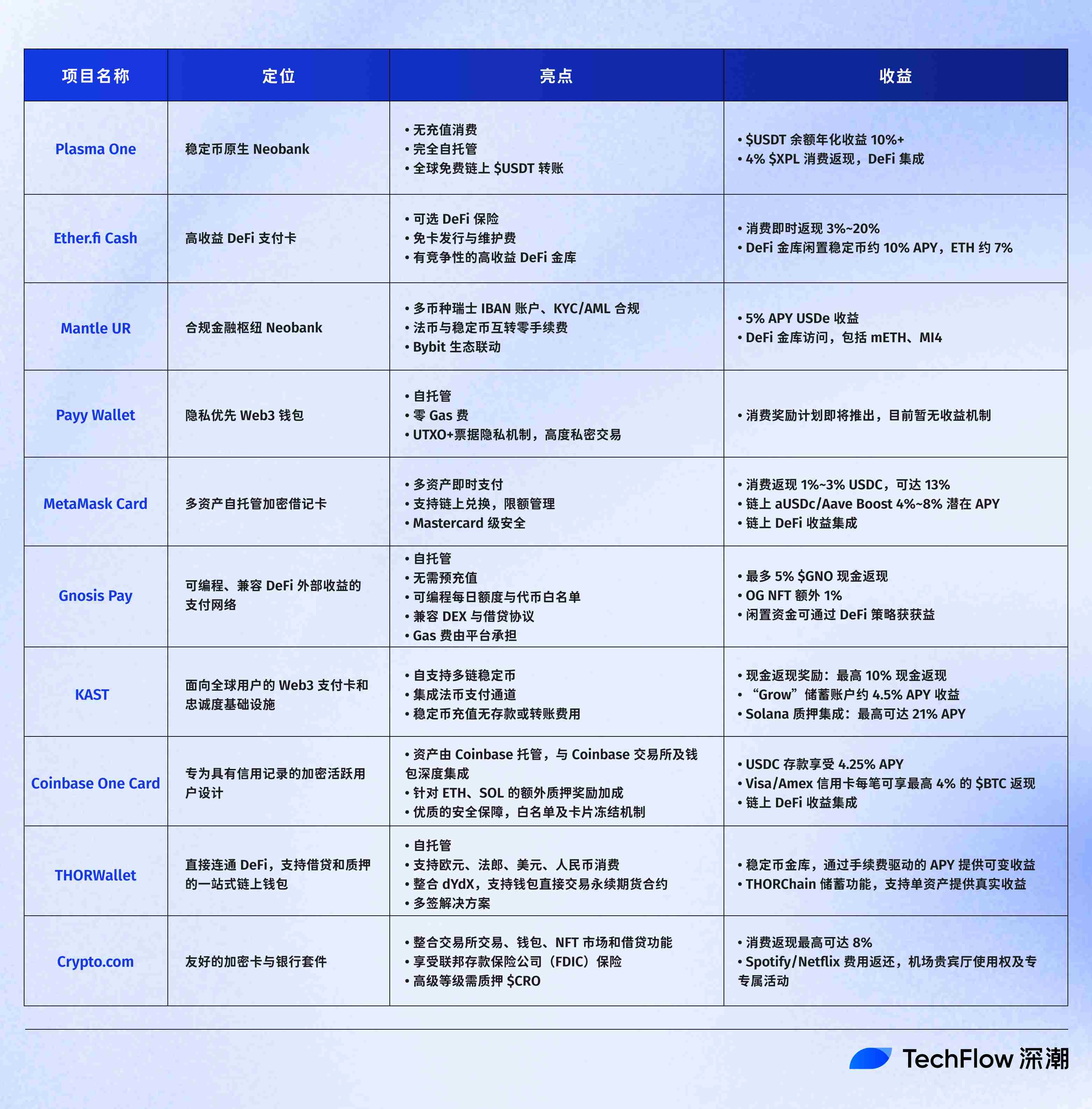
Plasma One: Building the World's First Stablecoin-Native New Bank
Plasma One initially supports $USDT and will expand to more stablecoins in the future, receiving support from Peter Thiel's Founders Fund and Tether executives, with cards issued by Visa partner Signify Holdings.
Highlights: A consumption model with no top-up requirements, allowing users to spend directly from their earning stablecoin balances. Assets are fully self-custodied. Free on-chain $USDT transfers globally.
Returns:
High-yield savings: $USDT balance annualized yield reaches 10%+, with earnings continuously accumulating before consumption.
4% cashback on consumption: Cashback is paid in $XPL, with higher reward tiers for frequent users and partners.
Seamless DeFi integration: Revenue sources are connected to EtherFi and other liquid staking strategies.
As a Neobank, Plasma One is not just an application but a gateway to its stablecoin payment system and real-world value network.
- Infrastructure Layer: Based on the native architecture of the Plasma chain, it achieves extremely low transfer costs and high throughput performance through its own consensus mechanism combined with LayerZero's cross-chain infrastructure.
As of October 31, Plasma has achieved a single largest cross-chain transfer amount of $800 million through LayerZero, with users paying only $0.81 in fees, which is almost negligible.
- Ecosystem Layer: Plasma has integrated core protocols such as USDT₀, Aave, Ether.fi, and Ethena, providing high-yield lending and liquid staking opportunities while ensuring liquidity.
Currently, the supply of USDT₀ supported by Plasma has exceeded $5 billion, providing a solid funding base for its stablecoin payment and DeFi ecosystem.
All funds of Plasma One are stored on the Plasma main chain, inheriting Bitcoin-level security while possessing Ethereum-like programmability, ensuring asset safety while providing greater flexibility and scalability for stablecoin payments, lending, and cross-chain applications.
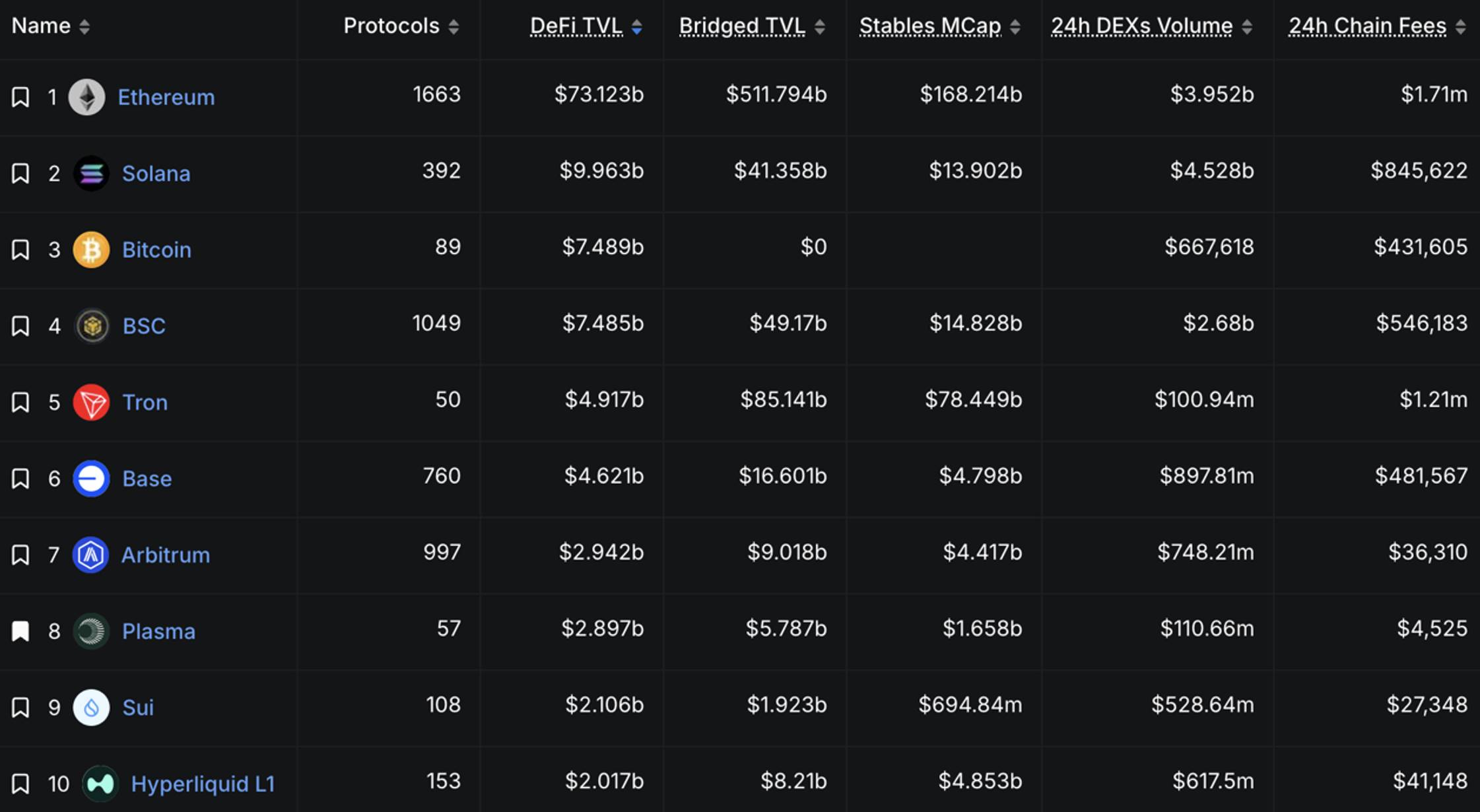
According to DefiLlama data, the Plasma ecosystem currently ranks eighth, with its native token $XPL having completed an oversubscription of $373 million.
From an investment perspective, Plasma is actively building a high-potential and strongly interconnected ecosystem. Given its current impressive data performance, users interested in stablecoin scenarios or on-chain payments might consider experiencing its ecosystem interactions firsthand, which may provide a more intuitive sense of this emerging chain's growth momentum.
Ether.fi Cash: 3% Instant Cashback, Stable High Returns from DeFi Treasury
Since its launch in mid-2025, Ether.fi Cash has grown to become one of the most active crypto card products. As of November 7, its cumulative spending has approached $100 million, with transaction counts exceeding 1.1 million. UserSafe account balances have surpassed $187 million, with cumulative cashback exceeding $4 million, and the number of active cards nearing 40,000, demonstrating strong market growth momentum.
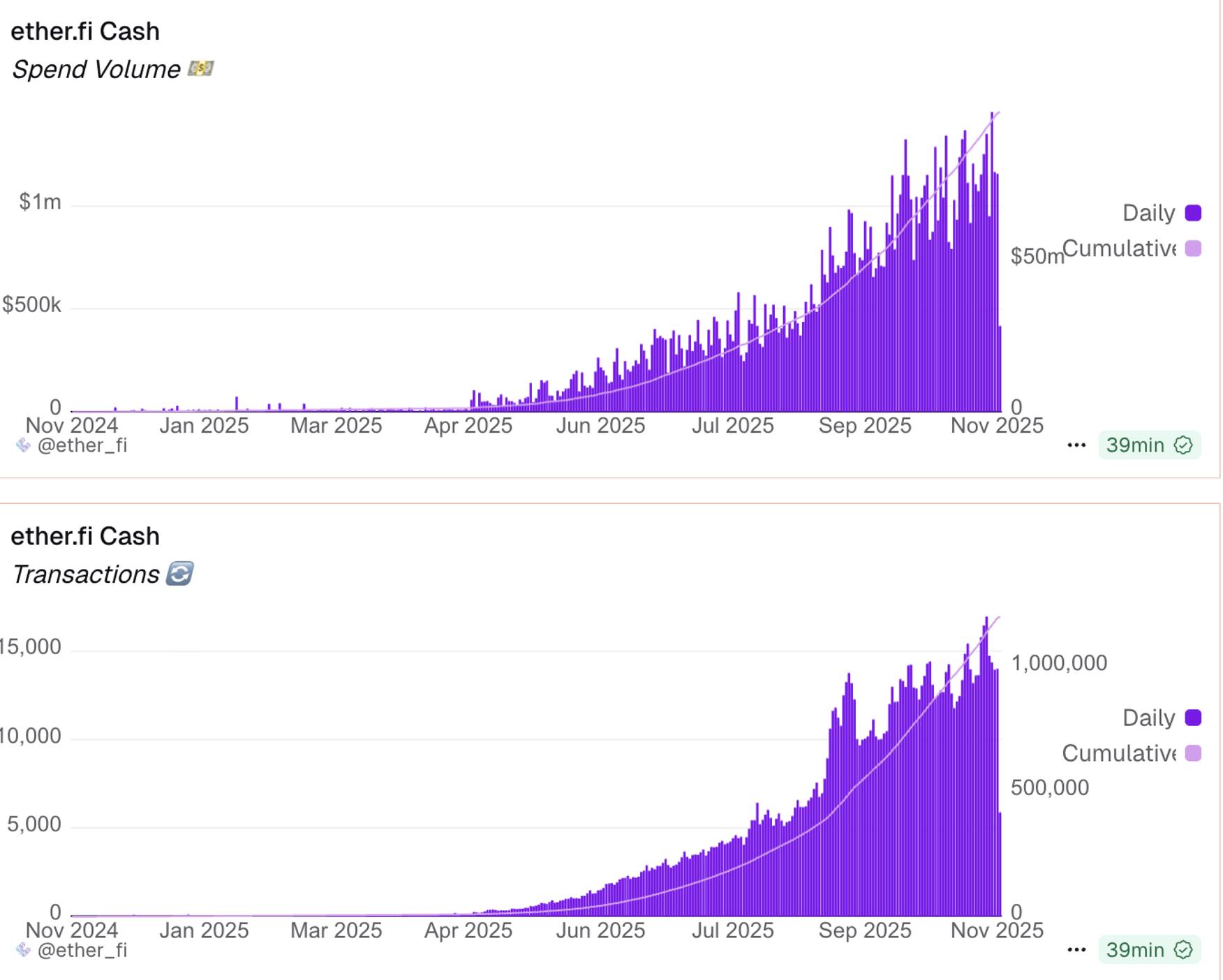
Highlights: Offers optional DeFi insurance, no card issuance and maintenance fees, supports automatic staking for yield repayments, and employs a fully non-custodial model to ensure users have full control over their assets.
Returns:
Instant cashback: 3% cashback on all spending, up to 20%.
Direct consumption: Users can spend directly from the DeFi treasury, earning returns while spending.
Competitive high-yield DeFi treasury: Funds deposited into EtherFi liquidity pools can yield up to 10% annualized for idle stablecoins, with approximately 7% returns for $ETH, allowing assets to "earn while lying down."
The impressive returns from the DeFi treasury are due to EtherFi's focus on "liquid staking/re-staking" business. Measured by TVL, it currently ranks seventh among established projects.

Ether.fi protocol's revenue is steadily growing and performing excellently, which also gives Ether.fi Cash the confidence for high cashback and high returns. Ether.fi Cash is also generous in terms of interactive rewards:
This month, the Ether.fi Cash Card launched a "Triple Rewards" campaign, with a total of 400,000 ETHFI tokens airdropped (approximately $360,000), covering on-chain deposits, offline consumption, and fiat currency deposits. Cashback on consumption is 3%, with substantial rewards.
The campaign can actually achieve high returns with multiple benefits. For example, by using the Borrow Mode to collateralize assets for continuous earnings while enjoying 3% cashback; additionally, depositing into the Liquid liquidity pool can yield about 9% annualized returns, and after deducting borrowing costs of 4%, the actual return still reaches 5%.
Mantle UR: A Compliant Financial Hub, Interconnected with the Bybit Ecosystem
Mantle UR aims to connect CeFi and DeFi through a borderless smart financial application, achieving seamless consumption, savings, and asset withdrawal.
The underlying Mantle public chain emphasizes high security for enterprises, while Mantle UR, as a Neobank, emphasizes compliance, holding licenses that meet KYC/AML standards. It is supported by Mantle DAO (formerly BitDAO), which has a funding pool of billions of dollars.
Highlights: Mantle offers multi-currency Swiss IBAN accounts, supporting USD, EUR, CHF, RMB, etc.; earn $MNT tokens through the rewards station; zero fees for converting USDe to fiat; funds are 1:1 backed, protected by a Swiss fintech license, and regulated by FINMA, ensuring safety and compliance.
Returns:
5% APY native yield: Based on USDe's integration with Ethena.
DeFi revenue treasury: Access to Mantle's DeFi revenue treasury, including products like mETH and MI4.
Ecosystem linkage: Can direct traffic to Bybit's new coin pool and Mantle's rewards station, enjoying high-return opportunities brought by exchanges and investment institutions like Mirana.
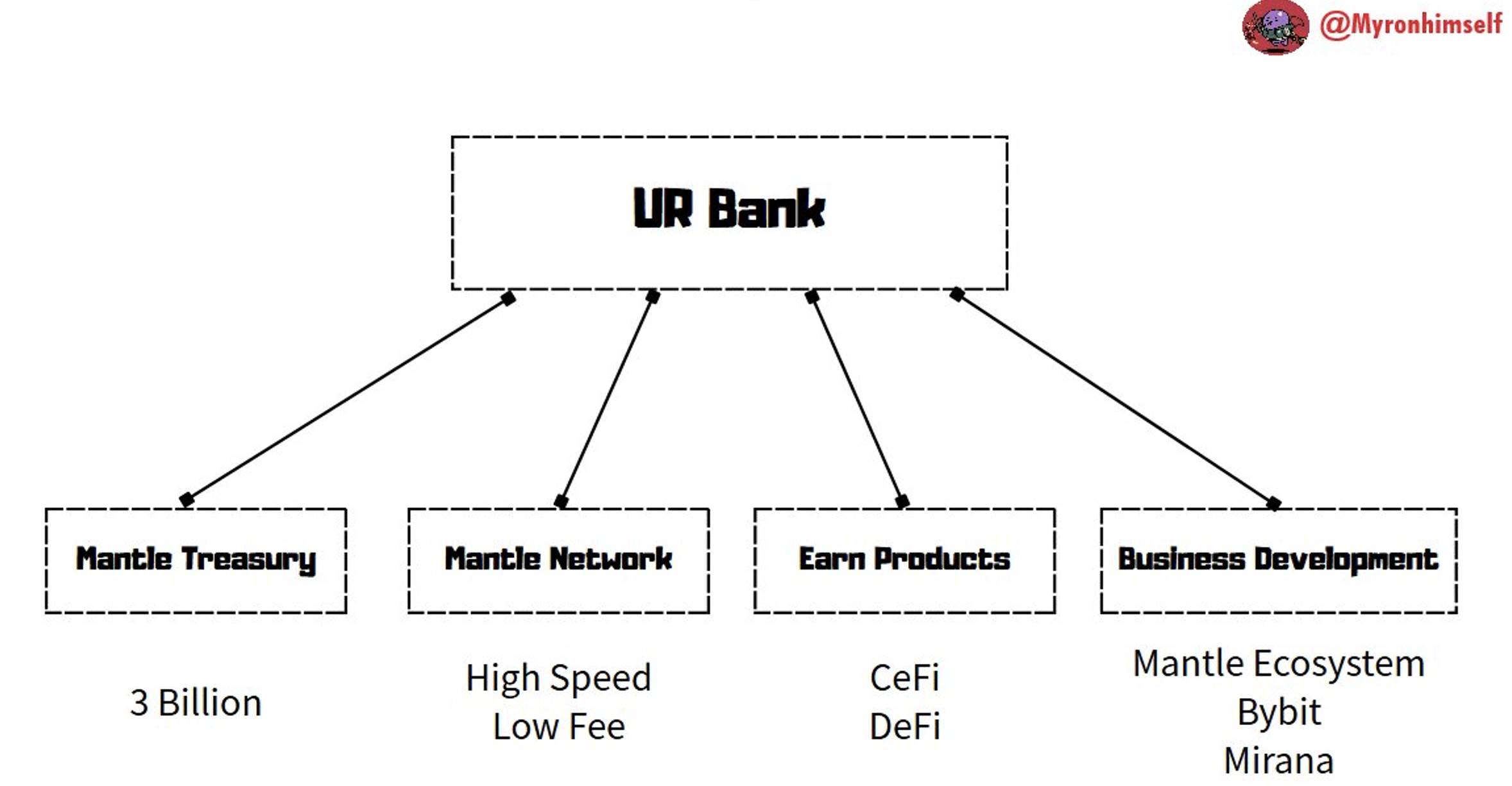
Currently, the total number of accounts has reached 13,598, and the number of transactions is gradually stabilizing, increasing from about 300 in September to around 900, indicating a solidifying user base.
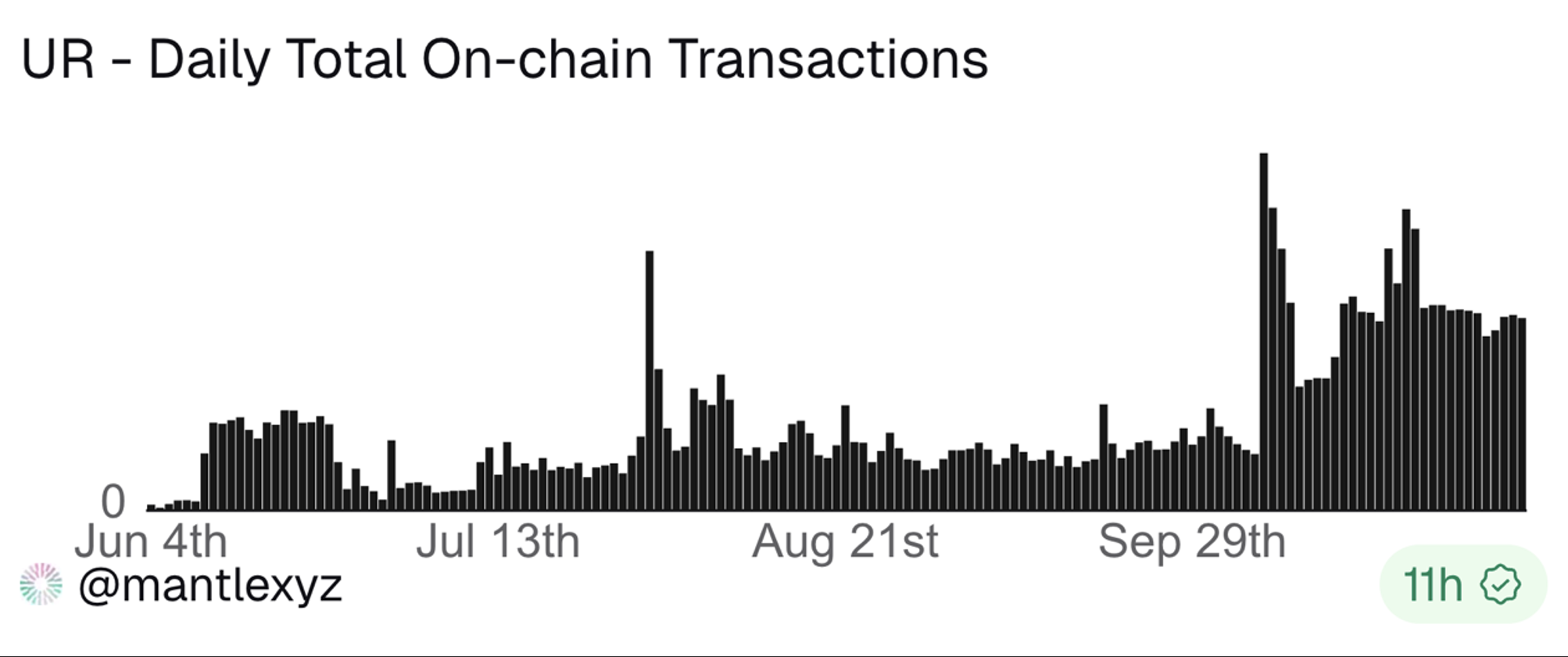
With Mantle's over $2.3 billion in funding reserves and support from strategic partners like Bybit, UR integrates stablecoin yields, compliant banking services, and global payment capabilities within the Mantle ecosystem.
Payy Wallet (Not Yet Launched): Privacy First, Zero Gas Fees
In TradFi, many scenarios have high privacy requirements, where transaction details and participants must remain completely confidential; while compliant privacy requires minimizing or selectively disclosing information to some extent.
This is precisely the problem that Payy Wallet aims to solve.
Compared to other high-yield Neobanks, Payy Wallet chooses to prioritize privacy protection first.
Payy Wallet is built on its own Payy Ethereum Layer 2 network, utilizing ZK-validium architecture and UTXO state model to achieve private, compliant, and gas-free stablecoin transactions.
Highlights: This is a Web3 wallet focused on privacy and global payment capabilities, supporting stablecoin transactions, self-custody, and zero-knowledge proof privacy protection, utilizing UTXO + receipt mechanisms to achieve high privacy. It can be used at 80 million Visa merchants worldwide.
Returns: Consumption rewards, with a consumption rewards points program set to launch soon; currently, there is no revenue mechanism.

Here is a brief introduction to the privacy mechanism that Payy focuses on: UTXO + Receipt Mechanism
Payy adopts a UTXO model similar to Bitcoin, which does not involve the concept of account balances; each transaction "consumes old outputs and generates new outputs."
However, unlike Bitcoin's design, Payy's plaintext UTXOs are not displayed; instead, they are replaced with encrypted receipts, and others only see the hash value of the receipts.
To understand with a real-life example, the hash value of the receipt is akin to sending a letter through the post office, where a "sealed envelope" contains money; others cannot see the amount inside, but each envelope has a unique numbered seal proving that the money is yours and that there is no fraud.
Once verified, the post office sends the letter, conveying your transaction information; after sending, your transaction behavior is already on-chain, becoming an immutable fact.
In this process, apart from the Visa provider, who needs to obtain necessary KYC information, no one can know the detailed information of your transaction, greatly protecting privacy.
MetaMask Card: A Multi-Asset Card Combining Banking Functions and Wallet Sovereignty
The MetaMask Card, created by ConsenSys in collaboration with Mastercard and Baanx, is a self-custodial crypto debit card aimed at DeFi users. Users can pay directly from their wallets, supporting on-chain exchanges, stablecoin yields, and cashback rewards, combining banking functions with wallet sovereignty.
Highlights: This is a self-custodial wallet that supports real-time payments in multiple assets, allowing for instant exchanges from ETH, USDC, USDT, etc., to fiat directly on the Linea network, with real-time limit management and Mastercard-level security protection. The card-issuing company is affiliated with Mastercard.
Returns:
Crypto cashback rewards: Earn 1%-3% USDC on each transaction, with cashback potentially reaching up to 13% when combined with on-chain partner rewards.
Yield-generating stablecoin features: Supports aUSDC and Aave Boost, providing potential APYs of 4%-8%.
Built-in DeFi yield integration: Covers Aave, the Linea platform, and Coinmunity token rewards, enhancing fund utilization efficiency.
The MetaMask Card not only achieves high returns but also thoughtfully covers users' daily consumption needs. Recently, it launched the MetaMask Card Travel campaign, offering travel discounts, higher rewards, and other benefits.
MetaMask airdrop is approaching (for detailed interaction guide, refer to: Airdrop is Coming, MetaMask Season One Points Reward Interaction Guide), currently offering virtual cards (free version) and physical metal cards; interested users can try interacting.
Gnosis Pay: Self-Custodial Programmable, Compatible with DeFi External Yields
Gnosis Pay is a self-custodial payment network based on the Gnosis Chain, providing Visa debit cards that can be directly linked to Gnosis Safe smart accounts. Users can conveniently use stablecoins like cash while maintaining a non-custodial nature.
Highlights: No preloading required, self-custodial; supports programmable consumption control with daily limits and token whitelists, can connect to DEXs, lending protocols, etc., compatible with DeFi external yields; gas fees are covered by Gnosis Pay, and it has a security module for delayed buffering of suspicious transactions.
Returns:
Up to 5% cashback: Cashback is issued in $GNO, with the cashback rate tiered based on $GNO holdings; OG NFT holders can receive an additional 1%.
Idle balance: No built-in APY; users can deploy funds to external DeFi strategies via Gnosis Safe to earn returns.
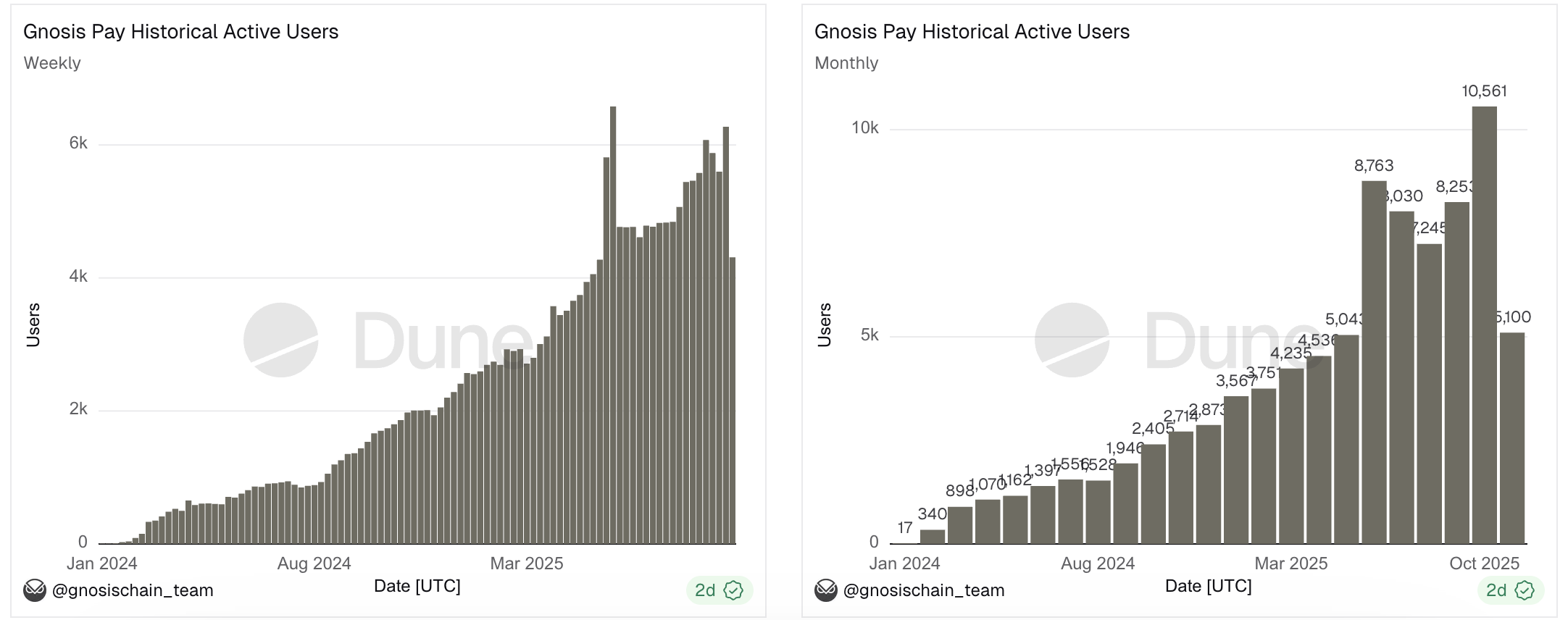
Since its launch, Gnosis Pay has performed well, processing over 1.7 million payments with a total amount exceeding $1.7 million, and the number of supported funding addresses on the platform has surpassed 21,000. Gnosis Pay's weekly and monthly active users have shown stable growth, indicating a continuous rise in product demand and stability.
Current Status of the Sector
Market fluctuations continue, but life goes on.
For those players whose funds are primarily on-chain, achieving seamless connections between profit-taking, loss-cutting, and daily necessities; solving the problem of small withdrawals; and being able to travel the world with just a card without the need for account opening or currency exchange is ideal.
To meet these needs, we are seeing more and more Neobanks springing up, each attracting numerous users with their advantages.
Compared to the short-term explosive trading volumes of some protocols, Neobank represents a more subtle change. This growth actually has greater long-term potential.
If one is accustomed to the convenience of using cards, who would return to traditional deposit and withdrawal methods?
Corresponding to this potential, such opportunities are also more hidden and not easily recognized. Because if judged solely by data, it is easy to underestimate: a billion-dollar AMM swap transaction does not directly create GDP, but a million-dollar Neobank transaction represents real consumption of goods and services.
What Neobank truly aims to do is to become a key driver in bringing crypto assets into the real economy.

Fortunately, we do not have to wait too long. I have already observed that Neobank is gaining traction in English-speaking regions, with public chains and exchanges actively laying out their strategies, high retention rates of active users, and stable growth in protocol transaction volumes.
Few have anticipated that the dark horse of this cycle would be privacy; perhaps in hidden corners, another track, Neobank, is brewing its next shining moment.
Conclusion
At some point in the world, thousands of Neobank transactions may be occurring simultaneously, with thousands of dream-chasers in the crypto space reflecting their on-chain achievements into off-chain joy, converting it into consumption, taking a short break, and then returning on-chain to pursue the next goal.
Neobank focuses on the most fundamental needs of every individual: whether on-chain there is a 100% win rate or unfortunate liquidation, when returning to offline life, one must eat well.
免责声明:本文章仅代表作者个人观点,不代表本平台的立场和观点。本文章仅供信息分享,不构成对任何人的任何投资建议。用户与作者之间的任何争议,与本平台无关。如网页中刊载的文章或图片涉及侵权,请提供相关的权利证明和身份证明发送邮件到support@aicoin.com,本平台相关工作人员将会进行核查。




